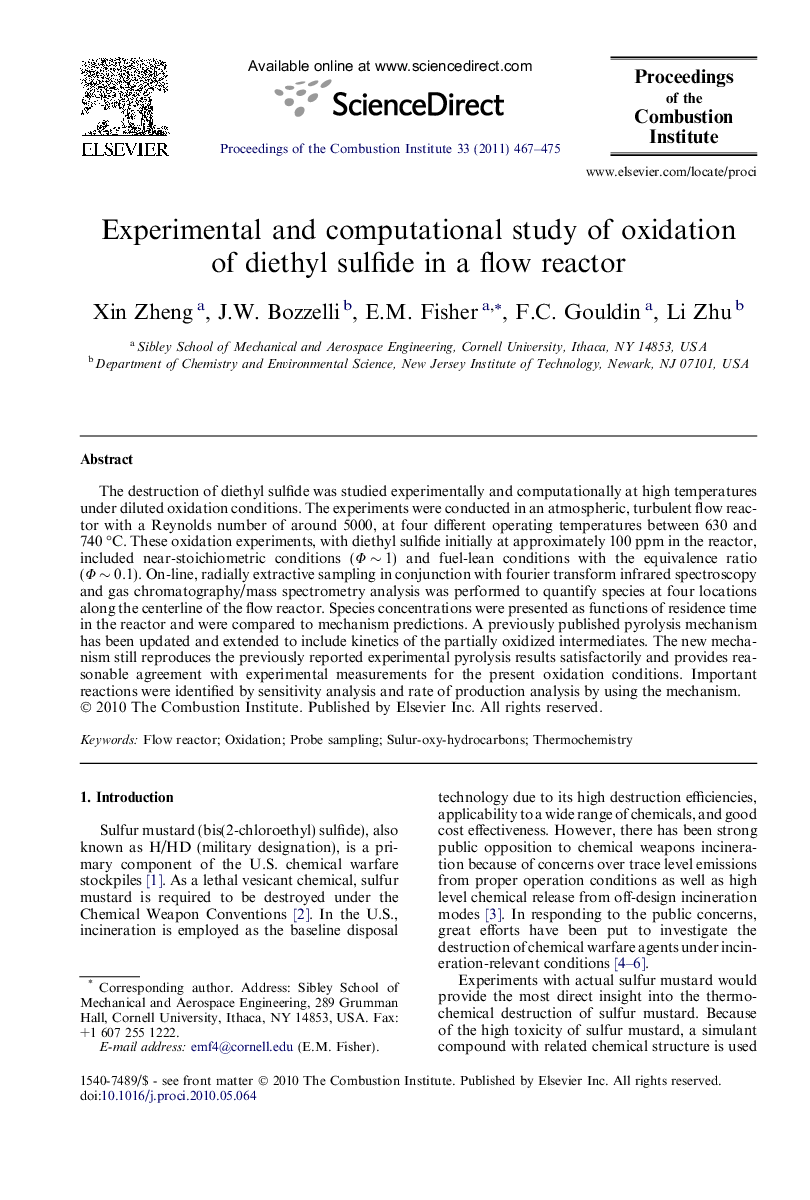| Article ID | Journal | Published Year | Pages | File Type |
|---|---|---|---|---|
| 241352 | Proceedings of the Combustion Institute | 2011 | 9 Pages |
The destruction of diethyl sulfide was studied experimentally and computationally at high temperatures under diluted oxidation conditions. The experiments were conducted in an atmospheric, turbulent flow reactor with a Reynolds number of around 5000, at four different operating temperatures between 630 and 740 °C. These oxidation experiments, with diethyl sulfide initially at approximately 100 ppm in the reactor, included near-stoichiometric conditions (Φ ∼ 1) and fuel-lean conditions with the equivalence ratio (Φ ∼ 0.1). On-line, radially extractive sampling in conjunction with fourier transform infrared spectroscopy and gas chromatography/mass spectrometry analysis was performed to quantify species at four locations along the centerline of the flow reactor. Species concentrations were presented as functions of residence time in the reactor and were compared to mechanism predictions. A previously published pyrolysis mechanism has been updated and extended to include kinetics of the partially oxidized intermediates. The new mechanism still reproduces the previously reported experimental pyrolysis results satisfactorily and provides reasonable agreement with experimental measurements for the present oxidation conditions. Important reactions were identified by sensitivity analysis and rate of production analysis by using the mechanism.
